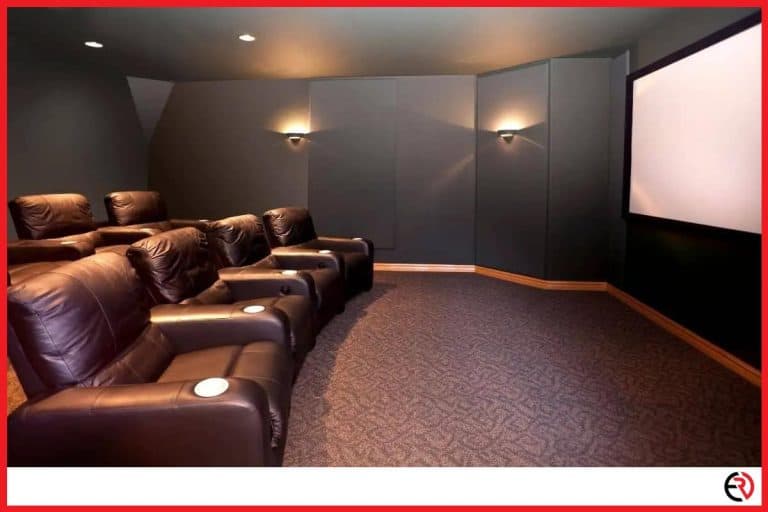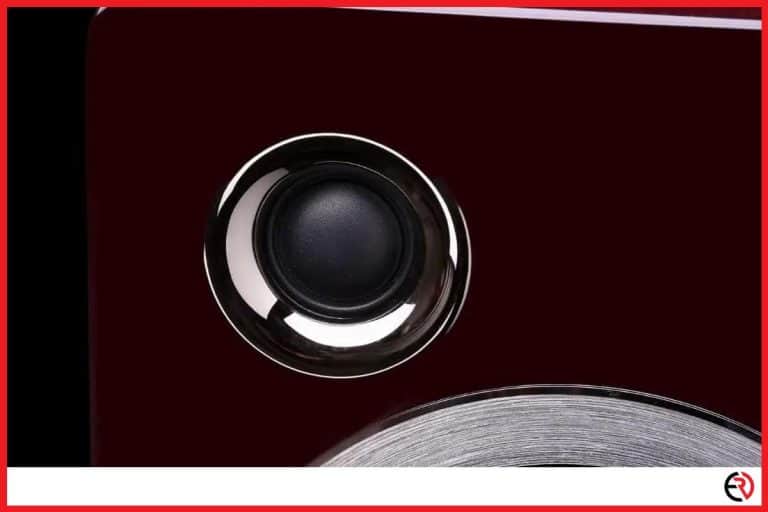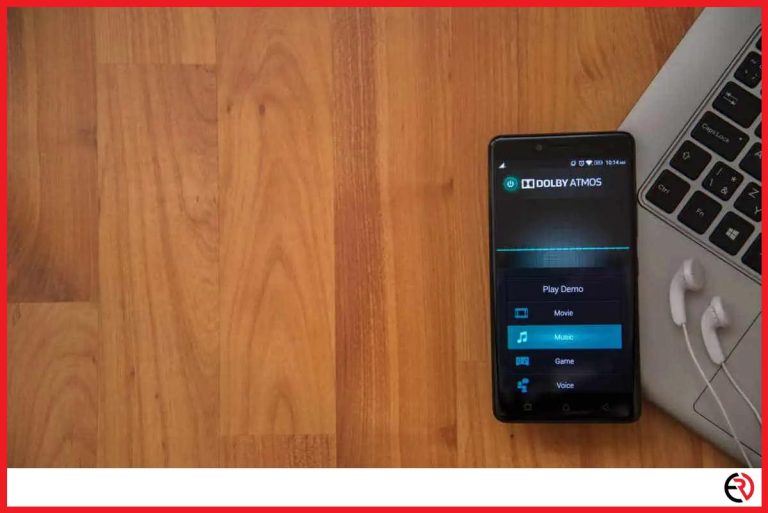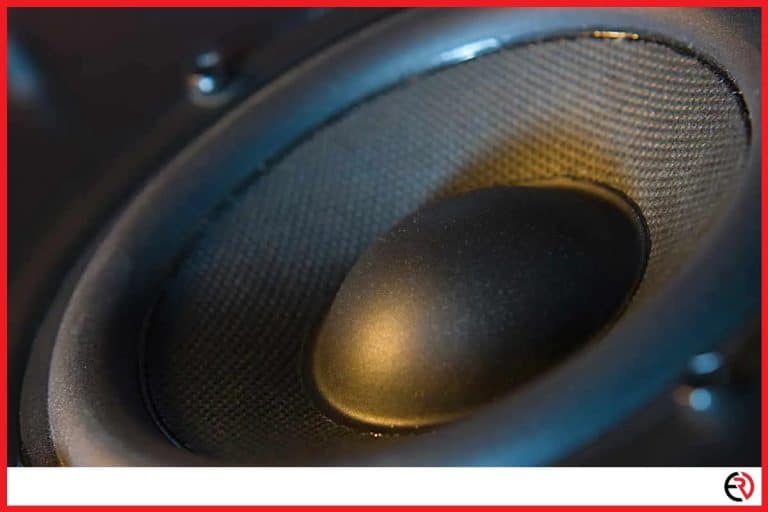What Room Size Is Best for Dolby Atmos?
This post may contain affiliate links which means that, if you choose to make a purchase, I may earn a small commission at no extra cost to you.
Dolby is the future of immersive sound. To take full advantage of a home theater system you will have to set it up properly so that it complements the inner dimension of your room and grants you that extra “Oomph”. Although there is no hard and fast rule on the room size limit for a Dolby Atmos setup, maintaining a standard room size will definitely contribute to the overall listening experience.
Whereas no perfect size is laid in stone, bigger is always better. If you want a fully immersive experience then 20ft long by 15ft wide is usually the perfect fit. If you prefer a smaller size then a 10ft square room is also fine with a large enough television.
In addition to speakers, the overall size of the TV is also important for the overall viewing and listening experience. If you have not started constructing the room, start with the TV screen. A larger screen demands greater viewing distance and a more elaborate speaker setup. Although 20 x 15ft is a good place to start, you can get a bigger room for your Dolby atmos setup.
How to decide on the correct room size?
You have to consider two aspects when determining the perfect room size for your Dolby Atmos speakers — the size and the shape. The size should be good enough so that the speakers can fill it with the right amount of sound. Similarly, the shape determines how the sound waves travel through the room.
I’ll discuss more on shapes later on. For now, let’s just concentrate on the size aspect of the room. Speakers are only as good as the room. You cannot expect a pair of fist-sized Bluetooth speakers to power a 20 x 26 ft space. They simply do not have enough power. To determine the correct room size, you’ll first have to figure the capacity of your speakers themselves.
Keep a few speaker options handy, such as 2.1, 5.1, 8.1, or even 24.1 setups. Once you have a setup in mind, you will know what room size is best for it. For example, an 8 speakers setup is usually enough for a 20 x 15ft room. You can also have a 24 speaker and 10 overlay speaker system, but there will not be much difference.
Now that size is taken care of, let’s dive into the most important aspect of all, the shape of your room.
How to decide on the correct shape of your room?
Rectangular rooms are best suited for home theatres. Anything square or not properly designed will cause the sound waves to bounce off each other, creating a loud cacophony of sounds.
Everyone does not have the flexibility to completely reshape their rooms after it’s been built. However, if you do, make sure to build one that allows for the smooth propagation of audio waves. For best results, start off with a rectangular room and then use drywall to modify the shape of the entire room. Here are a few examples of ideal room shapes that most audiophiles refer to:
1. The Golden Cuboid– This particular design is quite easily manageable and works based on the Fibonacci series. The ideal room size, in this case, is 10ft high x 16ft wide x 26ft long. The goal of this technique is to use the Golden Ratio which is 1.618. Start with height as the smallest value and use the ratio to calculate the remaining dimensions. Finally, by placing speakers optimally throughout the room you can get crisp sound quality where the audio waves do not cross each other and flow harmoniously with each other.
One of my bibliophile friends tore down one of his walls simply to create more space for his speaker. I envy his passions for music and cannot argue with the results. Since that little renovation, his home seemed more involved than before. Previously, it was way too loud for comfort. But now, it seems like he installed a new set of speakers.
It’s amazing to see how a simple design can have this much of an impact on the overall music quality. The Samsung HW-Q90A is one of my favorite speaker systems for this setup.
2. The Golden Trapagon– This might seem like an unconventional design to some, but is considered by far the most efficient when it comes to crystal clear sound quality. In the Trapagon, one side of the walls is longer than the other.
For instance, let’s assume that the wall where the TV is mounted is 13ft tall x 21ft wide and the wall where you will be sitting is only 10ft tall x 16ft wide. The length of the 26ft and this cone-like appearance reduce unnecessary sound wave bounces and improve the overall audio quality. The walls ratio in this particular design is 1:272 and it funnels the sound directly into the viewer’s direction while minimizing echo and reverberation.
Walking into such a home is mind-boggling for the first time and I tripped twice while finding my footing. However, the results speak for themselves and it was exemplary.
F.A.Q.
Is a good viewing distance necessary for a great Dolby experience? What is the ideal viewing distance for Dolby Atmos?
Yes, the viewing distance is important for a good Dolby experience. If this distance is wrongly calculated, then the speaker from the sounds will appear too loud or too feeble based on your location within the room. Once the viewing distance is determined, you can proceed to set up the speakers.
There are several ways you use to determine this distance. Though there is no science that determines this distance, the best way to measure it is to multiply the screen size by 2. So if you have a 30” TV, ideally you should be at a distance of 60”.
Another way to go about this would be to determine the biggest screen you can fit in a given space. You can calculate this by measuring the distance between the viewing area and the planned TV location and multiplying it by 7.7. For instance, if the length is 6 ft, then the maximum size of your Television should not cross 47”.
If you are looking for something more affordable then the Sony Z9F 3.1 is a great option. It’s perfect for smaller rooms and fills them up quite nicely.
So in conclusion, the viewing distance also decides the size of your room, making it yet another crucial factor for the perfect Dolby experience. Here is a chart for recommending the ideal TV size based on the viewing distance:
| Viewing distance | Recommended TV size |
| 6.7ft | 40” |
| 8ft | 48” |
| 8.3ft | 50” |
| 10ft | 60” |
| 10.8ft | 65” |
| 12ft | 72” |
| 13.3ft | 80” |
How much space do you need for a home theater?
In theory, as much room as you can afford. The bigger your room the more space you have to experiment with your setup, including larger screens and more speakers to take advantage of that space.
The two most important in deciding the room size are:
1. Screen size
2. Seating arrangement/distance
Once you have a rough idea of your room’s size, use it to calculate the rest of the dimensions. Although a rectangular-shaped room is best for audio performance, you can opt for a square room.
However, in the case of a square-shaped room, you’ll need to provide the right acoustic treatments to stop the audio from bouncing around such as using acoustic foam, covering the room with curtains, or the floors with rugs. Even adding furniture and plants can help with unnecessary and annoying reservations.
Conclusion
Hopefully, this guide has enough information to help you out with the process. Picking the perfect room size for your Dolby Atmos is never easy, however, there are a million ways to help you with the process and you can pick whichever suits your fancy.
Whether it is to determine the viewing length and calculating other dimensions or picking a TV size and then calculating the size of your room, it’s alright as long as you’re satisfied with the results.









